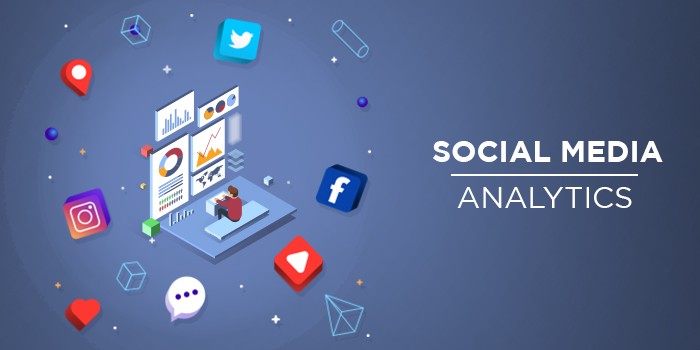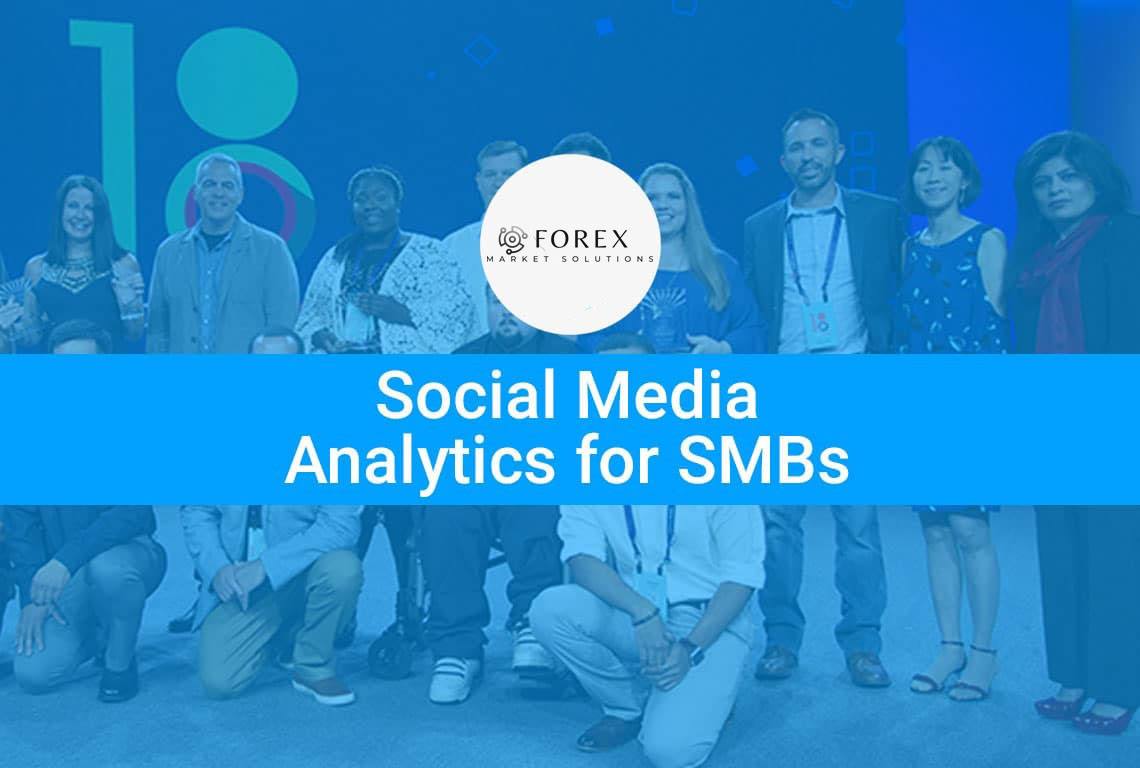Social media analytics for small businesses is no magic trick, it’s strategy made real. Imagine pulling back the curtain to see the gears turning behind your social media screens. Metrics become game-changers, guiding your next winning post. Choosing sharp tools can mean the difference between a ‘like’ and loyal customers. It’s time to turn likes into leads and followers into fans. Let’s unlock the growth secrets together. Buckle up, because we’re diving deep into the data-driven world that can skyrocket your small biz to big-time success.

Understanding the Analytics Landscape for SMEs
The Role of Social Media Metrics in Business Growth
Social media can work magic for small businesses. But to make that magic happen, we need to understand something called “social media metrics.” Now, what are those? Think of them as a treasure map. They guide businesses to find what’s working and what’s not. Some ask, “Why should we care?” Here’s the simple answer: they help your business grow. You want more people visiting your shop or site, right? Metrics help make that happen.
They tell us lots about our fans and customers. For example, engagement rate—it shows how many folks interact with our posts. When people like, share, or comment, that’s engagement. And it’s important because it means folks are not just seeing our stuff; they’re into it! We track this to see what content people love most.
We also look at how many new followers we get. This shows whether our audience is getting bigger. As our followers increase, so do our chances to sell our products or services. See, it’s all connected!
But, where do we get all this info? That’s where social analytics tools come in.
Selecting the Right Social Analytics Tools
Finding the best tools may seem hard, but it’s like picking the right fishing rod. You want one that fits you best. So, let’s split these tools into two groups: free ones and paid ones.
Free analytics software is great when you’re starting. It gives us insights without costing a penny. We can learn lots from them, like who our audience is and when they’re online. They also show us cool graphs and charts about our page’s activity.
But what if we need to dive deeper? Maybe we have tough goals or want to check on our competitors. That’s when paid social analytics solutions shine. They have more features and can tell us advanced stuff, like detailed customer sentiment analysis. It means we can really understand what people think about us. By knowing this, we can create content that hits the mark.
Now, you might wonder, “How do I choose?” Start by listing what you need to know. Are you curious about how many folks talk about your brand? Do you want to know the best times to post? Once you have that list, find the tool that matches it.
Remember, the goal is to use these tools to learn and then act on that knowledge. That’s called turning data into “actionable insights.” It means making smart changes that lead to more likes, more shares, and yeah — more sales.
These tools can also help us write better social media reports. They can even guide our entire social content strategy. With time and practice, we’ll get better at using them. Then, we can really help our business stand out on social media.
So, ready to dive into the world of social media analytics? Grab your fishing rod — let’s catch some big ones!
Mastering the Art of Engagement Analysis
Deciphering Engagement Rate and Its Impact
Why do likes, shares, and comments matter? They show how people react to your posts. For small businesses, a good engagement rate means your customers love your stuff. They care to react to it. When more people interact, your brand grows stronger online.
Think about engagement like a two-way street. It’s not just about posting content. It’s about starting a conversation. People talk back through likes and comments. It feels great when this happens, right? But it’s more than a good feeling. High engagement can lead to more sales. That’s why we check how our posts do.
Using social analytics tools helps a lot. They show what works and what doesn’t. This way, you can do more of what gets people talking. And less of what doesn’t. Makes sense? These tools can be free or ones you pay for. Both can tell you plenty about your posts.
The Interplay Between Follower Growth and Business Strategy
Now, let’s chat about followers. Why should we watch the number of followers? Think of followers as your cheering crowd. More followers can mean more customers. But it’s not just about the numbers. You want followers who really dig what you do.
When you see follower numbers climb, it’s good news. It means your brand is hitting the mark. You’re grabbing attention. And keeping it. If numbers drop, it might be time to try something new. Change your posts, offer deals, or share fun facts!
Understanding who follows you is key. Are they young, old, sporty, crafty? Knowing this lets you craft posts they’ll love. When they love what they share, guess what? They share it! When they share, their friends might follow you, too. Neat, huh?
Think of tracking follower growth as a map. It shows where you’ve been and where to go next. It makes your social strategy smarter. It helps you decide what to post and when to do it.
Social media is full of secrets on how to catch and keep interest. The key is learning how to read the signs. With a bit of know-how, small businesses can flourish. And how do we get this know-how? Through engagement analysis and follower insights. These let us play the social media game like pros.
Remember, every like, share, and new follower is a clue. A clue about how and when to speak to your crowd. Use social analytics to crack these codes. With each post, learn a bit more. Adjust, aim, and with time, you’ll see your business grow right before your eyes.
Tailoring Your Social Content for Your Audience
Utilizing Demographics to Optimize Campaigns
Small businesses, listen up! Your audience is not just numbers. They’re real people, with real likes and dislikes. Get to know them. I mean really know them. Age, gender, where they live, their favorite hobbies – these details matter. They tell you who’s paying attention to your stuff. And knowing them helps you talk right to their hearts.
Demographics let you create content that fits your audience like a glove. A baby boomer might love a good throwback post. Millennials? They might dig a quick how-to video on your product. See what I mean? When you nail down who’s watching, your posts start to really hit home. Use social analytics tools to pull these gold nuggets of data. They can show who’s engaging with your content and who’s just scrolling by.
With this scoop on your fans, you shape your message. You tweak your tone. You pick images and stories that make your audience say, “Hey, they get me!” And that’s pure gold in social media land.
Competitor Analysis and Social Listening as Growth Catalysts
Now, about the other players in your field – your competitors. Don’t just watch them from afar. Dive into their game. What are they posting? What’s getting their audience pumped? This is competitor social media analysis, and it’s like secret intel for your own strategy.
Pair this with social listening. It’s like having ears everywhere online. People might chat about your brand or products in places you don’t even know. With social listening, you find these chats. You see what’s loved and what’s not.
Maybe someone just raved about your service in a tweet? That’s your cue – say thanks! Build relationships. If they didn’t like something, that’s even better. That’s your chance to make things right and shine.
Both these tactics – studying your rivals and tuning into the buzz – they light a path for your business. You stop guessing what might work and start seeing clear steps to wow your crowd.
Use these insights to tweak your content. Maybe you spot a style of video that’s blowing up or a topic that’s got everyone talking. That’s what you want to jump on. But remember, always keep it real. Your audience can spot a fake a mile away.
Small business friends, take these tools and run with them. Know your people. Watch your competitors. Listen to the chatter. These are the secrets to making social media a powerhouse for your business. It’s not just about being loud; it’s about being smart. And with these strategies, you’ll not just speak to your audience – you’ll sing to them.

Measuring Success and Driving ROI with Analytics
Tracking Hashtag Performance and Identifying Peak Posting Times
Ever wonder what makes a hashtag on social media take off? It’s all about tracking performance. When you use a hashtag, you’re tapping into a conversation. You want to know if that conversation helps your business. By using social analytics tools, you can see how often people use your hashtag. You can also see how they interact with it. This is key for a small business like yours.
But here’s the real secret: you can find the best times to post. How? Look at when people are most active. With platform-specific analytics features, you can see when your audience is online. Post during these times to get more eyes on your content. More views mean more chances for engagement. And more engagement can lead to growth for your business.
Start by picking a hashtag. Then, keep an eye on it. You might spot patterns. For example, maybe your followers love #MotivationMonday posts in the morning. Now you have a plan. Post similar content when they want it. Seeing results? Share it with your team. They’ll love knowing what works.
Applying Customer Sentiment Analysis to Enhance Brand Reputation
Let’s talk about how people feel about your brand. It’s called customer sentiment analysis. It might sound big, but it’s quite simple. You look at words and emotions in people’s online talk. Are they happy with your service? Mad? Excited? Their words can tell you a lot.
For a small business, your online rep is everything. If folks love what you do, they’ll tell others. If they’re not happy, they’ll definitely talk about that too. You want to stay on top of this. Use free analytics software to catch these chats. They can show you the good and maybe not-so-good things folks say.
Don’t panic if you find some bad stuff. See this as a way to get better. Talk back to these customers if you can. Show them you want to fix what’s wrong. People notice when a brand cares. It can turn a mad customer into a fan.
But hey, when you see nice things, celebrate that! Give thanks to those happy customers. It’s your way of saying, “We hear you and we love it!” This back and forth with your audience? It builds trust. And in today’s world, trust is like gold for a business.
In short, keeping track of sentiments and hashtags can make a big splash in the social media ocean. With the right tools and know-how, you’re set to grow your brand. Happy posting and analyzing!
In this post, we broke down the analytics game for small and mid-size businesses. We talked about the power of social media metrics and how picking the right tools can help your business grow. I showed you how to make sense of engagement rates and how they tie into your company’s strategy. We also discussed tailoring your content to fit your audience using demographics, and how keeping an eye on your competitors and social listening can give you an edge.
Then, we dove into measuring real success and pushing for a solid return on your investment. We looked at tracking hashtag trends and figuring out the best times to post. Lastly, we explored how analyzing customer sentiment can polish your brand’s reputation.
My final thought? Leveraging these insights can be a game-changer for your business. Use them wisely, and watch your growth soar. Keep these tips in hand, and never stop evolving your strategy – that’s the real secret to mastering your social media presence.
Q&A :
What are the benefits of using social media analytics for small businesses?
Social media analytics can be incredibly beneficial for small businesses as they provide valuable insights into audience behavior, engagement patterns, and content performance. By understanding these metrics, small businesses can tailor their strategies to more effectively reach their target audience, improve their brand presence, and increase their return on investment. Analytics can also help identify social media trends, monitor brand sentiment, and track competitor activity.
How can small businesses get started with social media analytics?
To begin with social media analytics, small businesses should first identify their goals and the key performance indicators (KPIs) that are most relevant to those objectives. Once goals are set, businesses can select appropriate analytics tools that align with their social media platforms and budget. Many platforms such as Facebook, Instagram, and Twitter offer free built-in analytics features. There are also a variety of third-party tools available that cater to more specific needs. Businesses should then regularly monitor and analyze their social media data to adjust and optimize their strategies.
What key metrics should small businesses focus on in social media analytics?
Small businesses should focus on metrics that align with their specific goals, such as reach, engagement rate, follower growth, and the effectiveness of paid campaigns. Engagement metrics, like likes, shares, comments, and clicks, can provide insight into how the audience interacts with the content. Additionally, tracking conversion metrics is essential for businesses looking to measure the direct impact of social media on their sales or lead generation efforts.
How often should small businesses analyze their social media analytics?
The frequency of social media analytics review should match the business’s content posting schedule and marketing campaigns. For active social media campaigns, weekly monitoring may be necessary to stay on top of performance and make timely adjustments. For a general overview, a monthly analysis might suffice for many small businesses. It’s crucial to analyze data around specific events or promotional activities to immediately gauge their success and inform future strategies.
Can small businesses use social media analytics to improve their customer service?
Yes, social media analytics can be a powerful tool for improving customer service for small businesses. By monitoring analytics data, businesses can identify common customer inquiries, complaints, or feedback. This information allows them to address issues promptly, adjust their messaging, and understand customer needs better. Through sentiment analysis, businesses can also gauge customer emotions and satisfaction levels, ensuring that they maintain a positive relationship with their audience.
